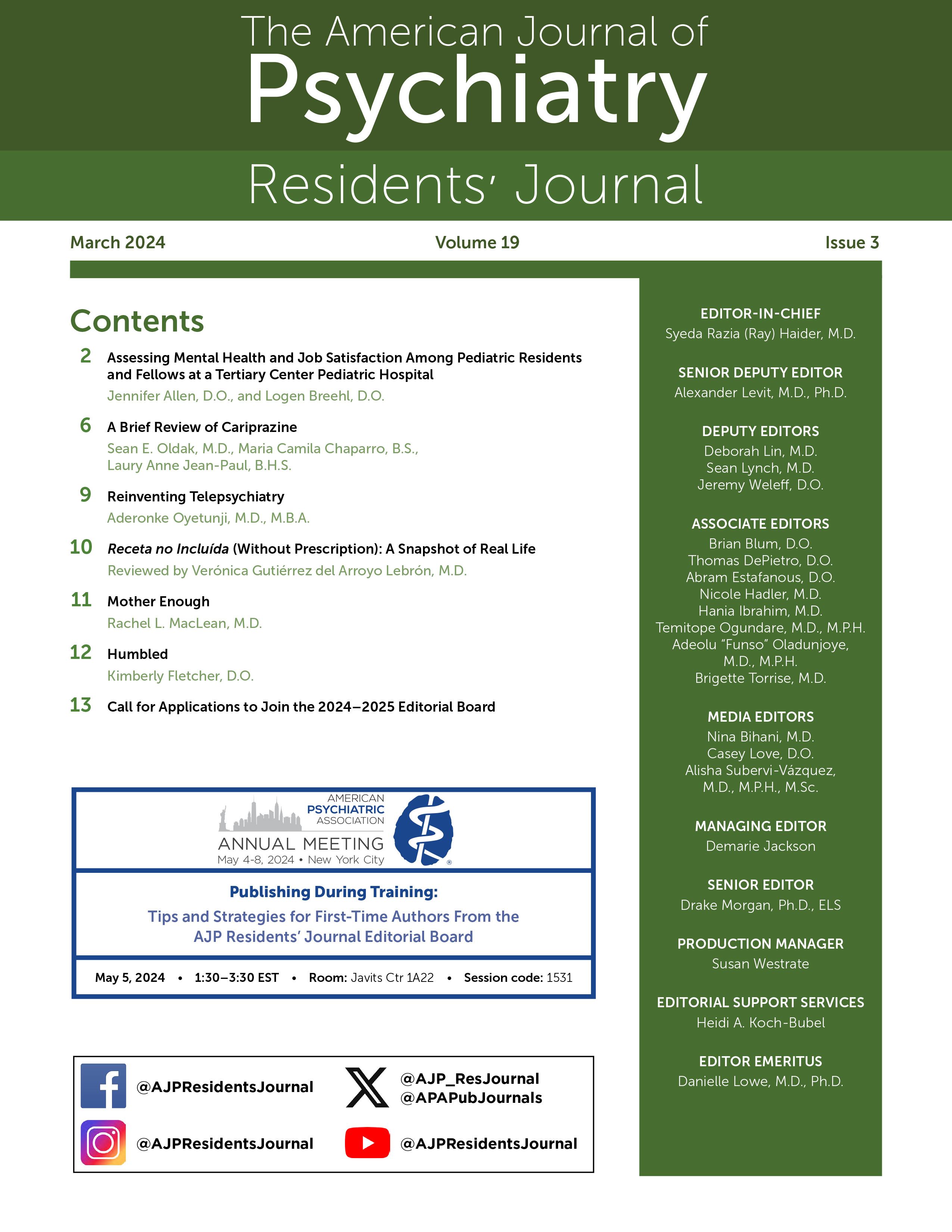Reinventing Telepsychiatry
With the increasing prevalence of mental health disorders in the United States and globally, it has become necessary to find more expedient and innovative ways to not only ensure access to care but also maintain excellence in the provision of quality psychiatric care and treatment. Beginning in the 1950s, the evolution of information technology created the opportunity for the utilization of telemedicine to deliver mental health services (1).
Telepsychiatry may have become the next frontier in the practice of psychiatry, creating a paradigm shift in the field. However, telemedicine is still lacking in its ability to create an environment, an ambiance, or a setting that provides a patient experience comparable to that of an in-person visit without a “false sense of presence” (2).
Given the confines associated with standard, in-office environments within which psychiatric assessments and evaluations can be completed, it can be challenging from a provider’s perspective to evaluate behavior within the context of in-person or telehealth settings. In health care, the quality of the practitioner-patient connection creates the scaffold for a therapeutic alliance, a critical ingredient in the healing process and treatment success. The ability of the practitioner to create a sense of presence, or the “feeling of being there” with the patient, is an essential element. More than other disciplines in medicine, psychiatry relies primarily on this interaction with and observation of individuals, along with evaluations of their mental and emotional state and their behavior. Virtual reality, however, may address this challenge with traditional and telehealth settings and bridge the gap by enhancing mindfulness, defined as gaining and adopting the capability of becoming more fully aware of the present moment.
Virtual reality is a computer-generated simulation of a three-dimensional environment where users feel a sense of immersion via a human-computer interface. Here, users can interact in a “seemingly” real way with virtual features that appear almost natural to the environment. This technology has been adopted in psychiatry as a treatment modality in the form of therapy for several psychiatric conditions, including anxiety disorders, addiction, eating disorders, attention-deficit hyperactivity disorder, autism spectrum disorder, and even psychosis (3). Further research has also been conducted into the use of virtual reality for neuropsychological testing (4). Despite these applications, its role and utility in patient-provider interaction has yet to gain traction. The effectiveness of psychiatric evaluation and treatment could be vastly improved with virtual reality as an interactive tool where both the patient-provider interaction and the environment are critical components of care delivery. By diminishing the disconnect that patients may experience during telepsychiatry visits and by creating a setting that is very real, virtual reality could promote an engaging encounter for patients and mental health providers, thereby revolutionizing the practice of psychiatry (5).
With advancing technological capabilities, virtual reality could become a more realistic interactive environment that could become the new frontier in delivering mental health services remotely, without sacrificing the essence of the in-person patient-provider interaction (5). Its implementation, however, is not without its challenges. Privacy, accessibility, resources, reimbursement, and provider and patient buy-in still need to be navigated before this becomes widely accepted. There is therefore a need to advance research in these areas to better guide the process in the future.
Virtual reality carries with it immense opportunities to broaden the vision for the future practice of psychiatry. By providing a realistic and immersive environment designed to engage both the patient and provider more fully in the treatment process, the virtual reality platform could become a significant tool in the armamentarium of the future psychiatric provider.
1. : History of telemedicine: evolution, context, and transformation. Healthc Inform Res 2010; 16:65–66 Crossref, Google Scholar
2. : Telepsychiatry as a case study of presence: do you know what you are missing? JCMC 2001; 6:JCMC642 Google Scholar
3. : The use of virtual reality in psychiatry: a review. Soa Chongsonyon Chongsin Uihak 2020; 31:26–32 Google Scholar
4. : Analysis of assets for virtual reality applications in neuropsychology. Neuropsychol Rehabil 2004; 14:207–239 Crossref, Google Scholar
5. : The growing field of digital psychiatry: current evidence and the future of apps, social media, chatbots, and virtual reality. World Psychiatry 2021; 20:318–335 Crossref, Google Scholar



